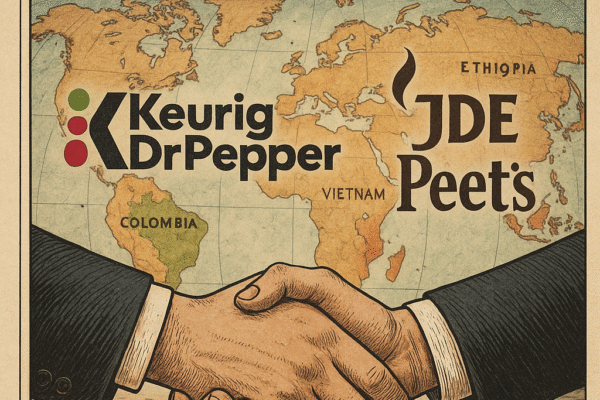Volvo Construction Equipment’s divestment of its 70% stake in Shandong Lingong Construction Machinery Co. (SDLG) for SEK 8 billion ($833 million) to Lingong Group-backed entities marks a critical inflection point in global heavy equipment strategy[3][6][16]. This transaction, expected to close in H2 2025 pending regulatory approvals, reflects Volvo’s response to intensifying competition, technological disruption, and shifting market dynamics in China’s construction sector[5][12][15]. The move enables Volvo to reallocate resources toward premium segments and sustainable technologies while maintaining China’s role as a global manufacturing hub, signaling broader industry realignment amid trade tensions and economic headwinds[6][12][17]. Financial implications include an estimated SEK 1 billion operating income gain offset by SEK 1.6 billion tax impact, with SDLG having contributed just 2% of group turnover[3][8][16].
💼 Seasoned CorpDev / M&A / PE expertise
Transaction Architecture and Historical Context
Deal Structure and Financial Mechanics
The sale involves a fund predominantly controlled by minority partner Lingong Group (LGG) acquiring Volvo’s entire 70% position in SDLG for SEK 8 billion ($833 million), with payment structured through installments tied to regulatory milestones[3][16][18]. Currency fluctuation clauses protect against SEK-RMB volatility, while the transaction’s positive operating income impact (SEK 1 billion) will be excluded from adjusted earnings due to its non-recurring nature[6][12][17]. Tax liabilities arise from capital gains recognition under China-Sweden bilateral agreements, creating a net negative tax effect of SEK 1.6 billion[16][17]. This valuation represents a 12.7x EBITDA multiple based on SDLG’s 2024 financials, aligning with recent Chinese machinery transactions despite sector headwinds[8][15].
Evolution of the SDLG Partnership
Volvo’s original 2006 majority acquisition aimed to penetrate China’s domestic equipment market through SDLG’s value-tier distribution network, establishing a dual-brand strategy separating premium Volvo products from SDLG’s economy positioning[11][13]. This enabled market share capture in lower-tier cities where Volvo’s premium pricing proved prohibitive, with SDLG wheel loaders priced 30-35% below Volvo equivalents targeting sub-1,000 hour/year applications[11]. By 2015, SDLG contributed 14% of Volvo CE’s global revenue through 25+ North American dealerships and Brazilian export channels, though technological convergence and domestic competition gradually eroded differentiation[11][13]. The partnership peaked in 2019 with 42,000 unit shipments before Chinese OEM consolidation and trade tensions triggered strategic reassessment[5][15].
Strategic Drivers Behind Divestiture
Competitive Pressures in Chinese Market
SDLG faced mounting challenges from domestic champions like Sany Heavy Industry and Zoomlion, which captured 37% of China’s wheel loader market through state-backed financing and aggressive pricing[13][15]. The Chinese construction equipment sector contracted 14% year-over-year in early 2025, with dealer inventories reaching 8.2 months of supply amid property sector crises[5][15]. Volvo CE’s Q1 2025 North American sales plummeted 18% as Chinese exporters flooded emerging markets with discounted inventory, compressing SDLG’s export margins[5][9]. This deterioration made SDLG’s mid-market positioning untenable against vertically integrated domestic competitors with lower component costs[12][15].
Technological Transformation Imperatives
Volvo’s refocus responds to accelerating electrification and autonomy adoption, requiring concentrated R&D resources. The company’s Q1 2025 global electric compact equipment orders surged 412% year-over-year, demanding reallocation of engineering capacity from conventional platforms[5][12]. SDLG’s technology integration lagged Volvo’s proprietary electric drivetrain development, creating product roadmap misalignment[12][16]. Volvo will now concentrate electrification investments in its Jinan Technology Center, which develops modular architectures for global deployment rather than China-specific platforms[12][17]. This shift acknowledges that sustainable technology differentiation, not localization, drives premium positioning in decarbonizing markets[6][16].
Post-Divestment China Strategy
Segmented Market Approach
Volvo CE will target three specialized segments representing 65% of China’s high-margin equipment demand: mining (32% revenue contribution), quarry/aggregates (21%), and heavy infrastructure (12%)[12][16]. This entails deploying Volvo-branded autonomous haulage systems in copper mines, electric excavators for urban infrastructure, and hybrid crushers for aggregate processing, avoiding economy-tier competition[6][17]. Distribution will consolidate through 12 flagship service centers offering lifecycle contracts bundling equipment, maintenance, and battery-as-a-service, replacing SDLG’s volume-oriented dealer network[12][16]. The reoriented commercial model prioritizes solution profitability over unit volume, with average contract values projected to increase 47% under the new structure[16].
Industrial System Optimization
China retains strategic importance as a dual-purpose manufacturing hub, with Volvo’s Shanghai excavator facility expanding production lines for export-spec electric models[12][17]. The plant will supply 35% of Volvo CE’s global electric excavator demand by 2027, leveraging Chinese battery supply chain advantages while avoiding domestic market price wars[6][16]. Component localization increases to 78% for export products, utilizing China’s automation-ready supplier ecosystem to reduce bill-of-materials costs by an estimated 14% versus European manufacturing[12][17]. This preserves China’s cost innovation role while eliminating exposure to domestic market volatility through export-oriented production[6][15].
Broader Portfolio Implications
Concurrent European Consolidation
Complementing the SDLG exit, Volvo announced the SEK 7 billion ($731 million) acquisition of Swecon’s construction equipment distribution operations across Sweden, Germany, and the Baltics[9][15]. This vertical integration captures aftermarket revenue streams representing 41% of segment profits, while securing control over electrification infrastructure rollout[15][18]. The dual transactions rebalance Volvo’s geographic exposure, reducing China revenue contribution from 28% to 19% while increasing European services integration from 34% to 42% of CE segment income[8][15]. Bernstein analysts note the Swecon purchase provides direct customer access critical for subscription-based equipment models, offsetting SDLG’s volume-driven earnings profile[15].
Investor Reaction and Valuation Impact
Volvo shares rose 2.3% following the announcement, reflecting approval of the strategic rebalancing toward higher-margin businesses[15]. The divestiture improves Volvo CE’s operating margin profile from 14.4% to an estimated 16.1% by removing SDLG’s 9-11% margin business, though near-term headwinds persist from North American tariff impacts[5][8][15]. UBS projects the transactions will lift 2026 EPS by 7-9% through portfolio simplification, with China restructuring costs fully absorbed by 2025[15]. Credit Suisse highlights reduced exposure to Chinese construction downturn as a deleveraging catalyst, potentially lifting Volvo’s credit rating to A- by 2026[15].
Industry-Wide Implications
Chinese Market Restructuring Signals
Volvo’s retreat from joint ventures reflects broader foreign OEM reassessment, following Caterpillar’s 2023 write-down of SEM investments and Komatsu’s Yongmao Holdings divestiture[13][15]. Domestic champions now control 79% of China’s equipment market, with SDLG’s independence potentially accelerating industry consolidation through LGG’s merger ambitions[13][15]. Lingong may combine SDLG with Liugong’s excavator division, creating China’s third-largest construction equipment player capable of challenging Sany-Zoomlion duopoly[15][18]. This realignment threatens foreign manufacturers’ access to China’s supplier ecosystem, forcing accelerated localization or export withdrawal[11][13].
Global Competitive Landscape Shifts
The transaction underscores Chinese OEMs’ transition from partnership dependency to autonomous global competition. SDLG inherits Volvo’s Brazilian manufacturing footprint and North American dealer relationships, enabling direct export competition against former partner[11][13]. Meanwhile, Volvo’s premium focus intensifies rivalry with Caterpillar and Komatsu in mining electrification, where all three manufacturers now allocate over 20% of R&D budgets[12][15]. Industry analysts project the divestiture will trigger similar portfolio optimization by Doosan Infracore and Hitachi Construction Machinery, potentially exiting economy segments to concentrate on technology-differentiated niches[15][18].
Conclusion: Strategic Recalibration Amid Market Transition
Volvo’s SDLG exit represents a pragmatic adaptation to China’s evolving equipment landscape, sacrificing volume for differentiation in sustainability-critical segments. The SEK 8 billion divestiture funds accelerated electrification while maintaining China’s manufacturing advantages through export-focused production[6][12][17
Sources





